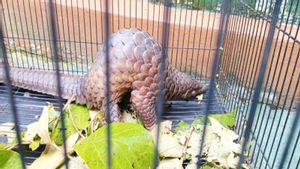JAKARTA - NASA's mission to explore the Moon (Artemis) again has a bright spot. One of them is the Heliophysics Environmental and Radiation Measurement Experiment Suite (Hermes) mini weather station which has passed the mission test.
Hermes will launch alongside NASA's Gateway in the next decade. The Gateway is a lunar outpost where Artemis astronauts will live and work as they orbit the Moon.
This small space station will help carry out the deep science operations that are essential to mankind's continued exploration of outer space.
Now NASA scientists will transition to finalizing the design of the Hermes mission. Hermes is one of two mini weather stations that will monitor space weather with a focus on heliophysics, the study of the sun.
"Hermes will be an important part of the Artemis mission and NASA's goal of creating a permanent presence on the moon", said Jamie Favors, NASA's Hermes Program Executive.
Hermes was built by NASA's Goddard Space Flight Center. The mission will examine dynamic conditions created by the Sun, such as Coronal Mass Ejections (CMEs) that can cause damage to both mission instruments and human activities.
Launching Popular Science, Monday, February 7, the station will consist of four special instruments that will be placed together on a single platform. One of them, called Nemisis, or the Noise Canceling Instrument Magnetometer in a Small Integrated System, will measure the magnetic field around the Gateway.
BACA JUGA:
Gaining a better understanding of space weather phenomena through this mission will go a long way in preparing for future crewed expeditions.
"In terms of human exploration, space weather is really about the radiation environment", said Project Scientist for the Hermes mission, William Paterson.
Scientists have been measuring space weather fluctuations on small scientific spacecraft for decades, but Hermes will be the first monitoring system on a manned mission to collect data beyond Earth's magnetic field, acting as a radiation shield.
This magnetic field, which stretches some 60,000 miles into space, protects astronauts and the International Space Station (ISS) from harmful radiation spewed out during events such as solar flares and other galactic cosmic rays.
In a separate payload, the Gateway will also carry Hermes' counterpart, the European Radiation Sensors Array (ERSA). ERSA's main focus will be on how solar wind radiation affects astronauts and their equipment.
The daily data sent by these stations will help create a clearer picture of how space weather operates throughout our Solar System. That information is very important to know as humans try to create a habitable environment on, or near other planets.
"We see this as a kind of pathfinder to help build this capability that we think will be needed in the future to support exploration", said Paterson.
Hermes is scheduled to take off at the end of 2024, leaving enough time for the mission to undergo tests and changes.
The English, Chinese, Japanese, Arabic, and French versions are automatically generated by the AI. So there may still be inaccuracies in translating, please always see Indonesian as our main language. (system supported by DigitalSiber.id)

















